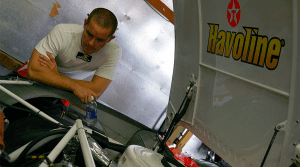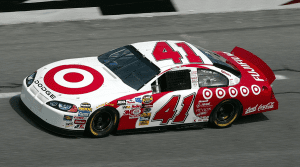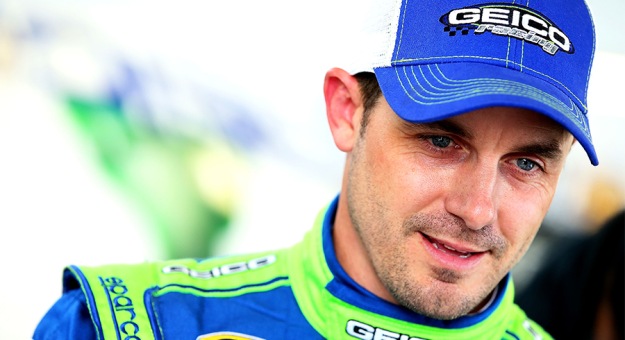Editor’s Note: This is part one of a two-part series on former NASCAR driver Casey Mears. Part two will run tomorrow.
The Mears family has been involved in motorsports for decades.
From four-time Indianapolis 500 winner Rick Mears, to Rick’s brother and Off-Road Motorsports Hall of Famer Roger Mears, the “Mears Gang” is well known in the racing world.
For Roger’s son, Casey Mears, his unique story blazed a new path.
That path led Mears to a 14-year NASCAR Cup Series career, one that consisted of nearly 500 starts, for some of the best known team owners such as Chip Ganassi, Rick Hendrick and Richard Childress.
However, before getting a chance in NASCAR’s highest level, Mears had his sights set on an open-wheel career.
“It’s so funny, because my mentality was never NASCAR,” Mears said. “My goal was always to be in IndyCar. I went through the open-wheel ranks, through Formula Mazdas, Indy Lights, started getting into Indy cars, and that was always my goal and desire, was to be an Indy car driver.
“I remember back in those days, I wouldn’t call it a feud, but there was definitely a big difference in mentality 20-25 years ago from an open-wheel mentality to what we would’ve assumed to be a stock car mentality.
“The stock car guys were calling Indy car guys the Euro, high-end, wine-and-cheese type people,” Mears continued. “We looked at NASCAR guys as the American redneck, tin-top taxicab drivers. That’s just kind of how it was. Growing up I had respect for the guys that did well. I had respect for the sport over in NASCAR. But at the same time, I had a really strong desire to be in open-wheel.”

That desire to compete in open-wheel racing was altered, after rising through the ranks of Indy Lights, and a handful of starts in the CART and IRL tours.
“I got an opportunity on a whim to go out to North Carolina and take a look and see what it was all about,” Mears said. “My dad had got hired by Chip Ganassi prior to me even moving out to North Carolina. He was shop foreman.
“He spent most of his career in off-road on the West Coast. I just remember him calling me going, ‘Casey, you got to get out here. There’s so much racing. There are race shops everywhere. It’s just a racers dream.’
“One year I was struggling in Indy, trying to make the show with a team that wasn’t capable of doing it,” Mears continued. “I was looking at a couple possible opportunities the following year in CART and in IRL. At that time, it was still really unclear on whether it was going to be CART or whether it was going to be IRL in the future.
“I got an opportunity to go race in the Busch Series and I thought, ‘You know what, I’m going to go take a look at that. Dad says it’s crazy out there, I need to go take a look. Maybe, I go out and do this for a year, and if it doesn’t pan out, I’ll know whether to just do CART or pursue IRL.’”
The Move To NASCAR
After moving to North Carolina, Mears ran the full 2002 NASCAR Xfinity Series slate racing for team owner Wayne Jesel. It didn’t take long before Mears got the call to replace Jimmy Spencer at Chip Ganassi Racing to drive the No. 41 Target Dodge in 2003.
Mears was officially a full-time stock car driver in NASCAR’s highest level. However, Mears didn’t feel like a true stock car driver.
The challenges of hopping into a stock car after competing in open-wheel racing, proved to be a steep learning curve for the Bakersfield, Calif., native.

“It took me a good two-and-a-half years, if not more, to really feel like I was a stock car guy, and could race with other stock car guys at their level,” Mears said. “A lot of guys growing up, running short tracks their whole life, there’s a craft and there’s a way to drive a stock car versus an Indy car. It’s very different.”
Mears’ biggest trouble spot early on in his NASCAR career was overdriving the race car. The approach to driving an Indy car was vastly different for Mears, one that was simple to describe.
“I don’t know any other way to really say this, but really, the bigger the balls, the faster you go,” Mears said. “If you’re willing to drive in deeper, hit that gas sooner, as long as you didn’t crash, the car was typically going to go faster.
“I drove the car too hard into the corner, tried to pick up the throttle too early. With the stock car, especially at the time, I think the gap is probably less of a gap now than it was back in 2001, between a stock car and an Indy car.”
With the large downforce added to the Generation 4 stock car in the early 2000s during qualifying, it gave Mears a stronger comfort level.
“I could post really strong qualifying laps, but then struggle to learn what the car needed to feel like in the race,” Mears said. “Every time that we’d qualify, you’d put all that tape on the nose. The thing had a ton of front downforce, it would turn really good. I loved the way it felt. We’d go out and qualify inside the top-five or threaten for a pole on a weekly basis. Then they pull all that tape off the nose and had to figure out what the car needed to feel like with way less front downforce.
“That was a big transition for me, because it would be like being in an Indy car. Go out and run a qualifying lap, be very competitive. Then, ‘OK, now we’re going to go into race trim, and we’re going to pull 30 turns of front wing out of this thing and try and figure out how to make it handle.’ It would never feel good, it would feel terrible. That was a challenge.”
Better better days were ahead.
Check back tomorrow for part two.
Follow @DHoffmanMedia22